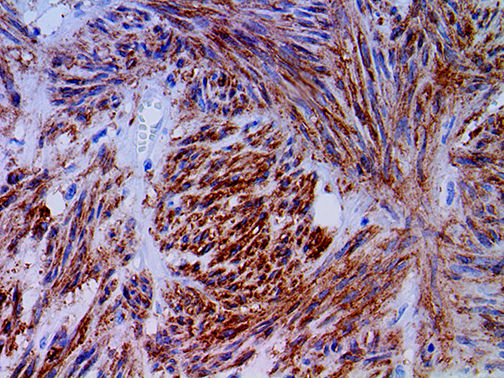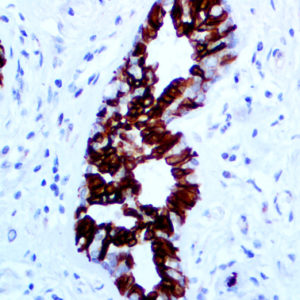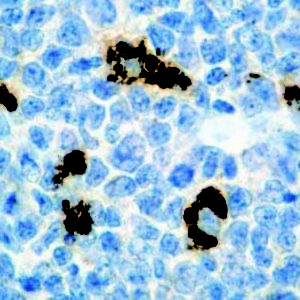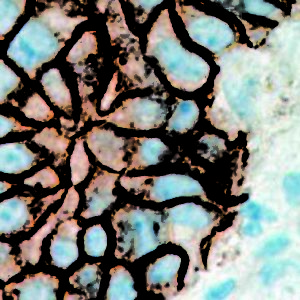
IHC of DOG-1 on an FFPE GIST Tissue
| Intended Use | For In Vitro Diagnostic Use | |||||||||||||||||||||||||||||||||||
| Summary and Explanation | DOG1 (discovered on GIST 1), a cell-surface protein of unknown function, is expressed strongly on the cell surface of GISTs and is rarely expressed in other soft tissue tumors. Among GIST cases with c-Kit mutations, the DOG1 antibody identified 11% more cases than a c-Kit antibody. DOG1 identifies the vast majority of both c-Kit negative and PDGFRA mutated GIST cases that may still benefit from imatinib mesylate (Gleevac), an inhibitor of the kit tyrosine kinase. In addition, DOG1 immunoreactivity is seen in fewer cases of mesenchymal and epithelial tumors, and melanomas when compared with c-Kit. The use of this highly-sensitive and specific novel marker should increase the accuracy of GIST diagnosis. | |||||||||||||||||||||||||||||||||||
| Antibody Type | Rabbit Monoclonal | Clone | EP332 | |||||||||||||||||||||||||||||||||
| Isotype | IgG | Reactivity | Paraffin, Frozen | |||||||||||||||||||||||||||||||||
| Localization | Cytoplasmic, Membranous | Control | Salivary Gland, Breast, GIST | |||||||||||||||||||||||||||||||||
| Presentation | DOG-1 is a rabbit monoclonal antibody derived from cell culture supernatant that is concentrated, dialyzed, filter sterilized and diluted in buffer pH 7.5, containing BSA and sodium azide as a preservative. | |||||||||||||||||||||||||||||||||||
| Availability |
| |||||||||||||||||||||||||||||||||||
| Note: For concentrated antibodies, please centrifuge prior to use to ensure recovery of all product. | ||||||||||||||||||||||||||||||||||||



